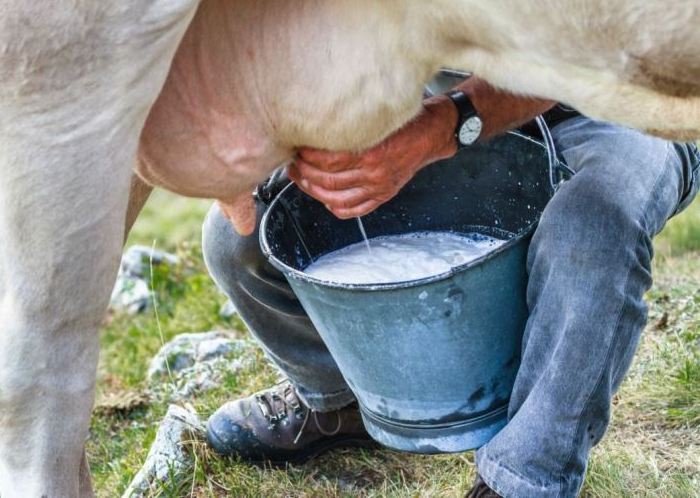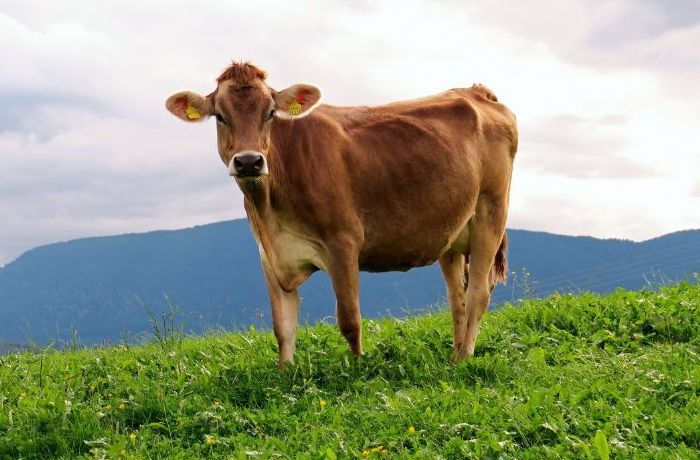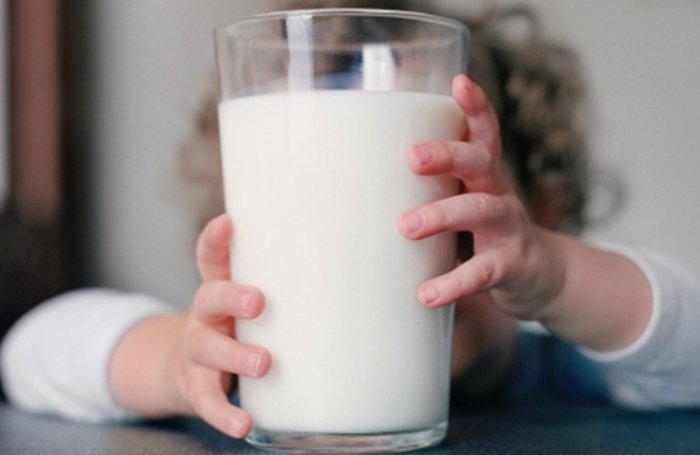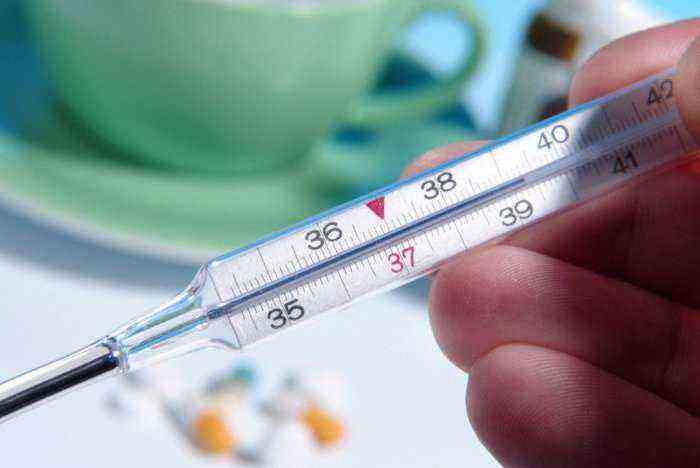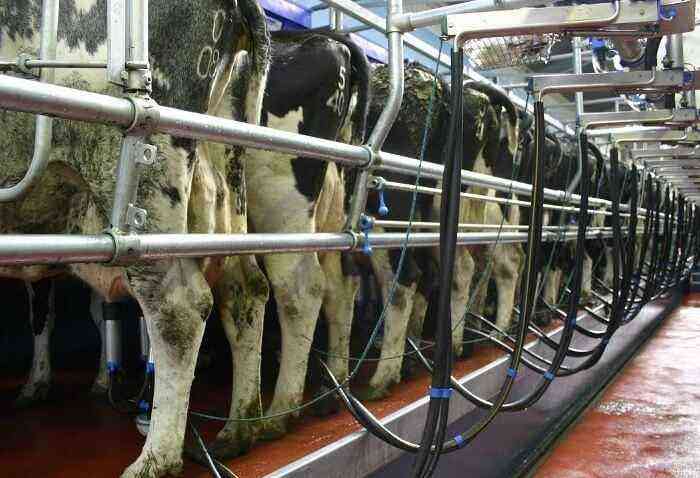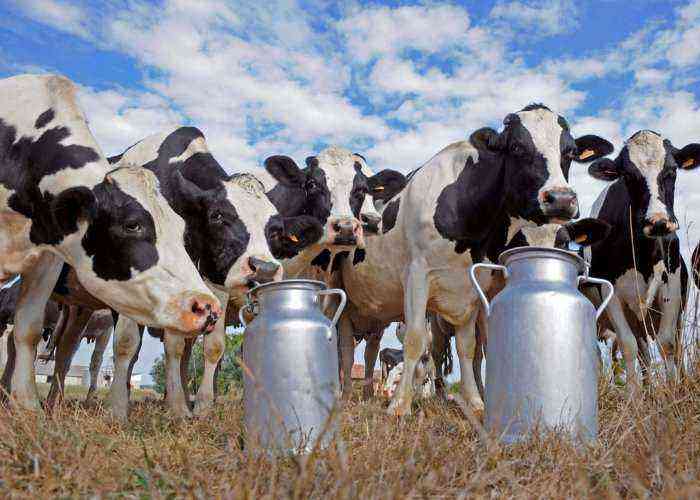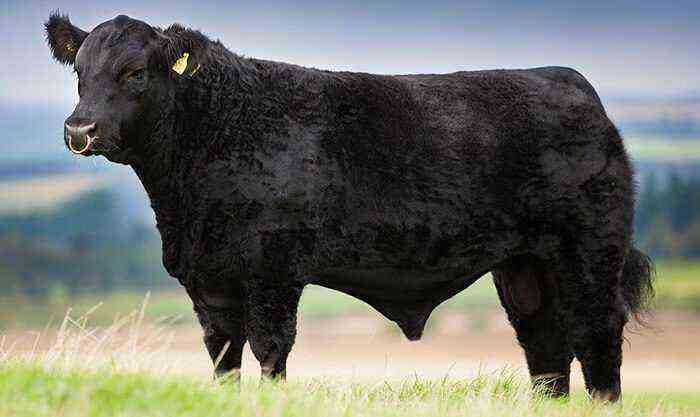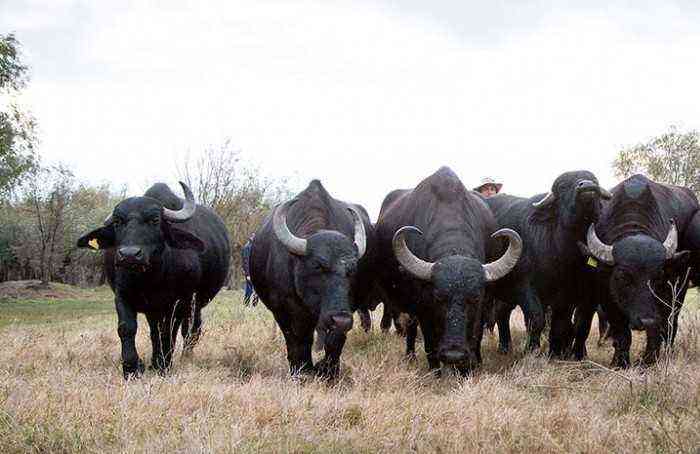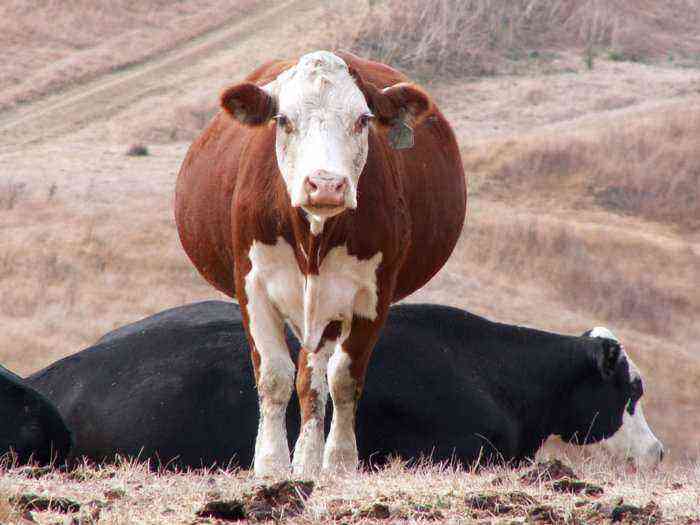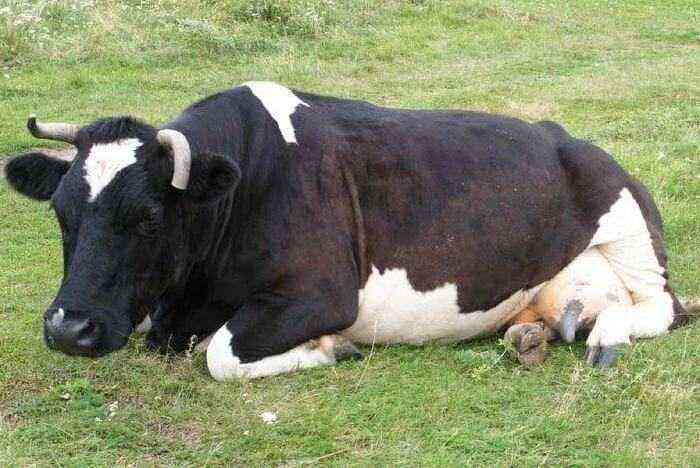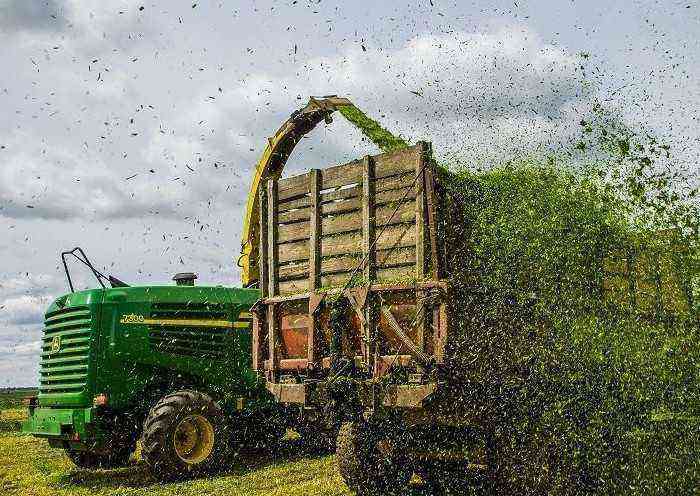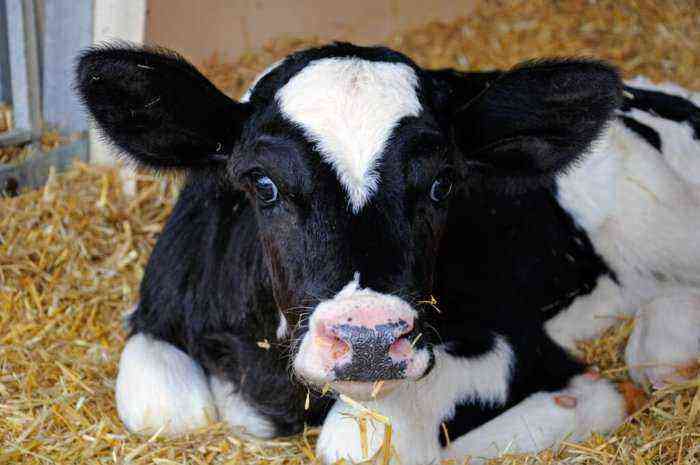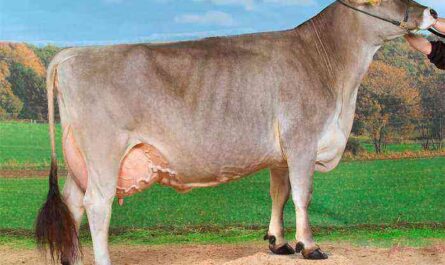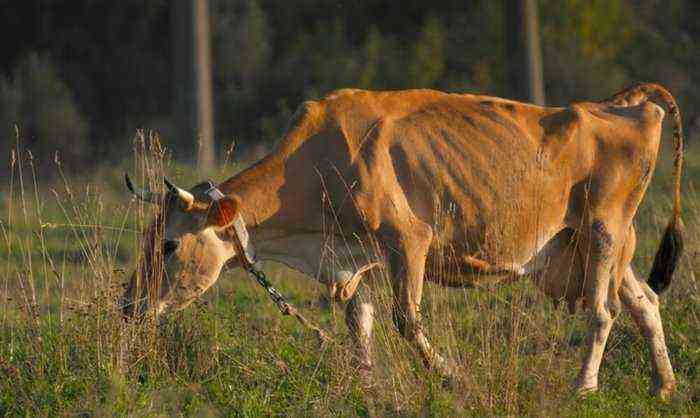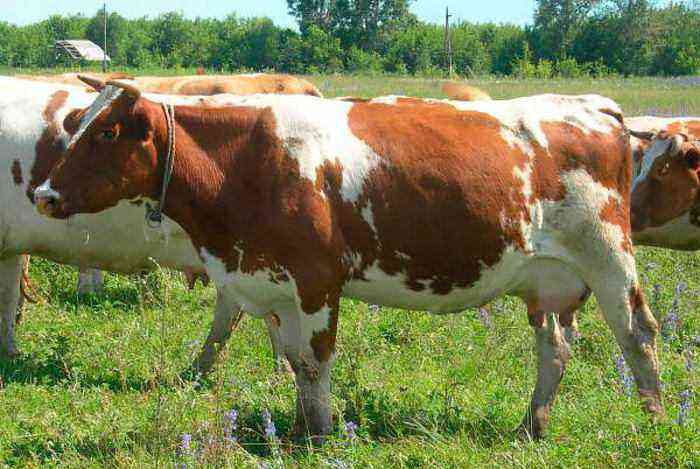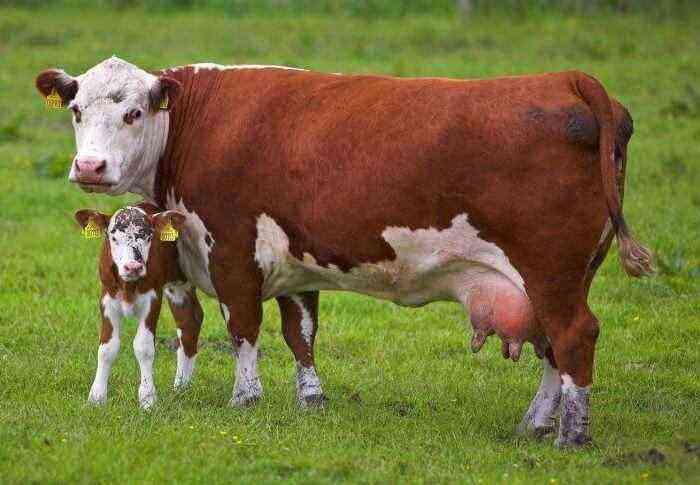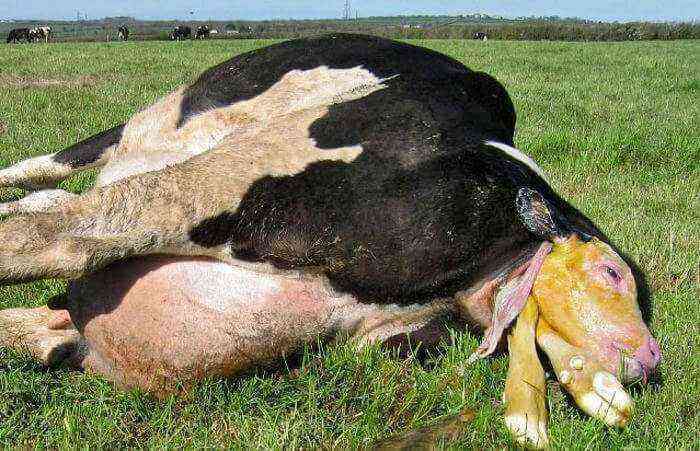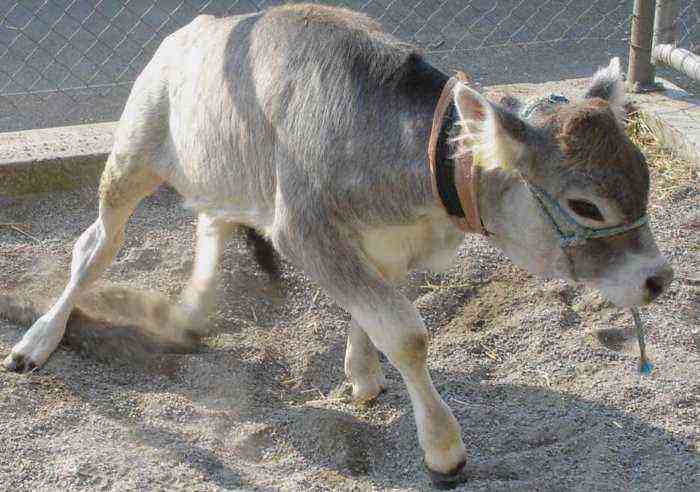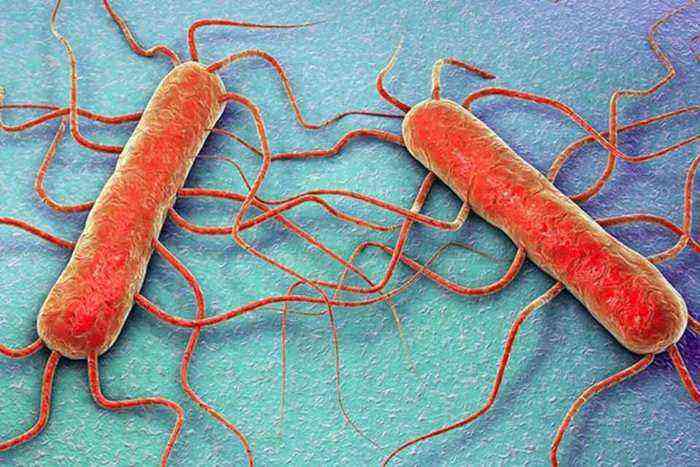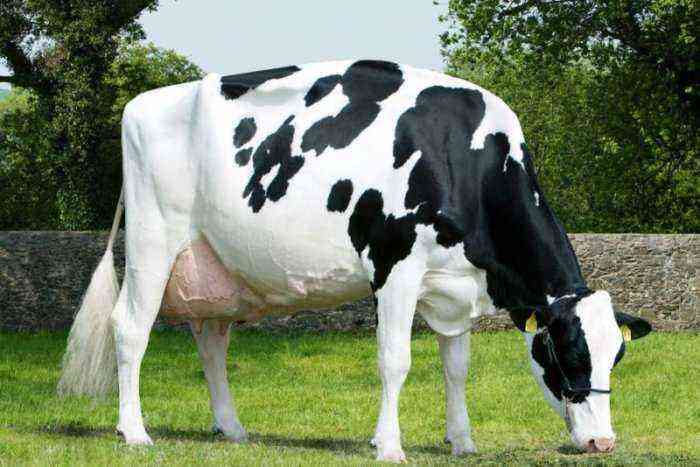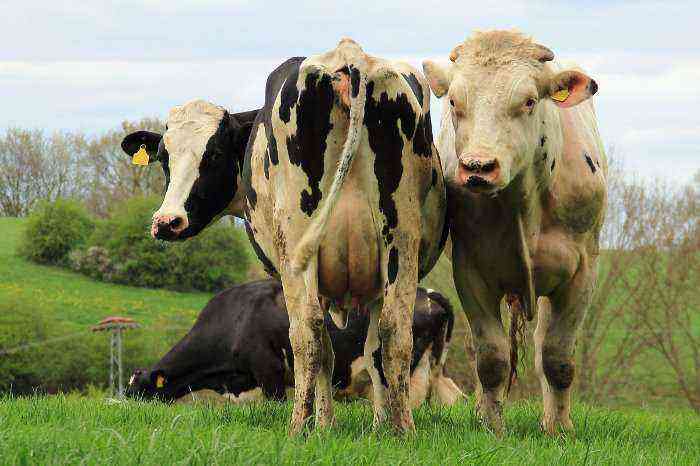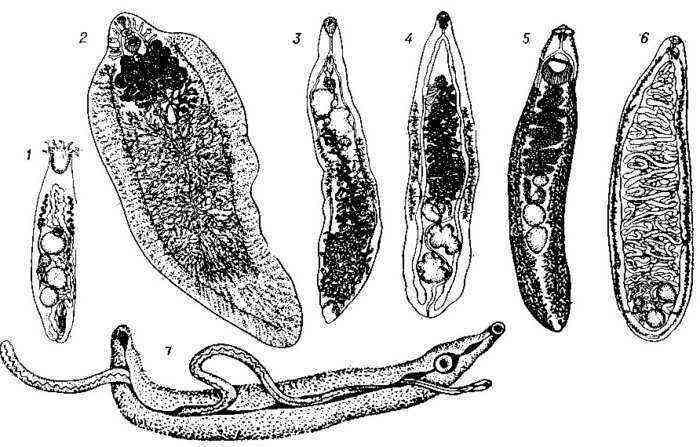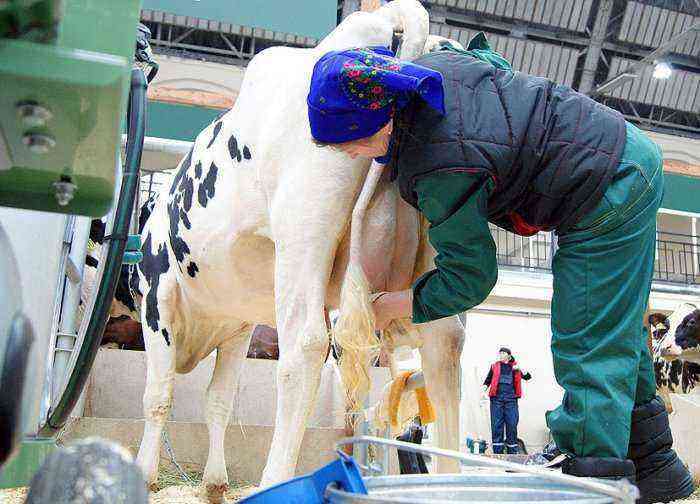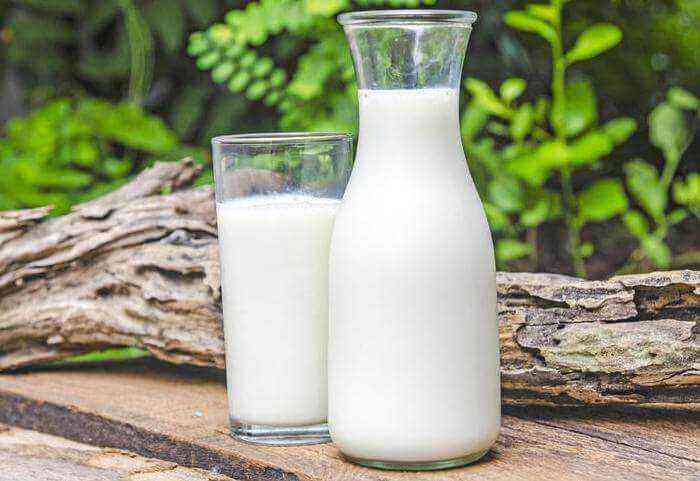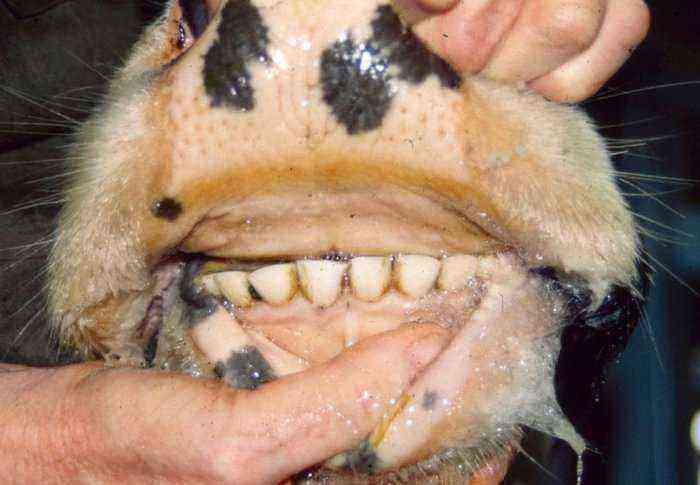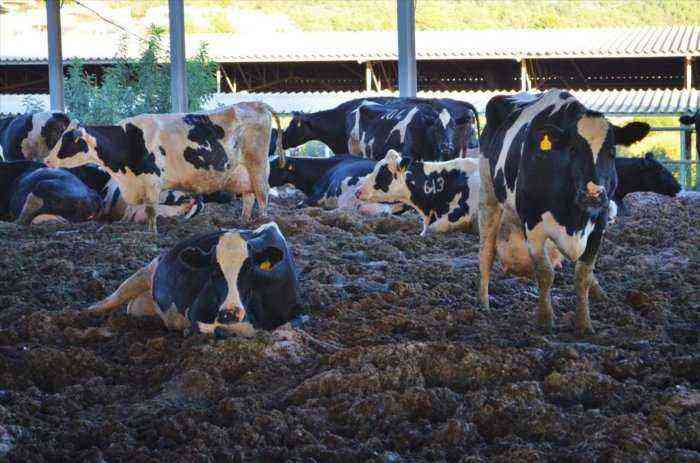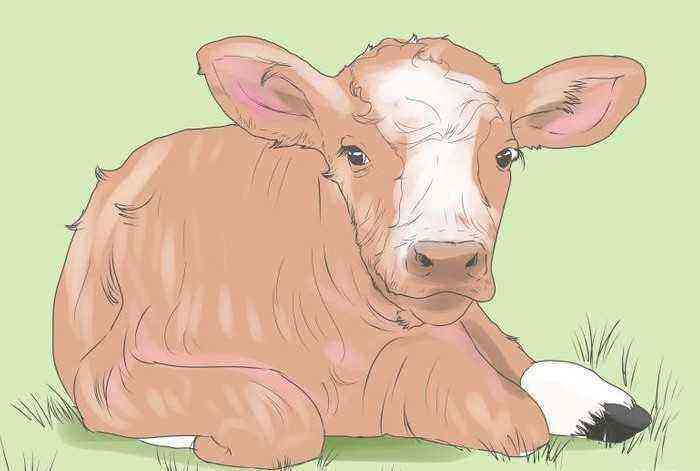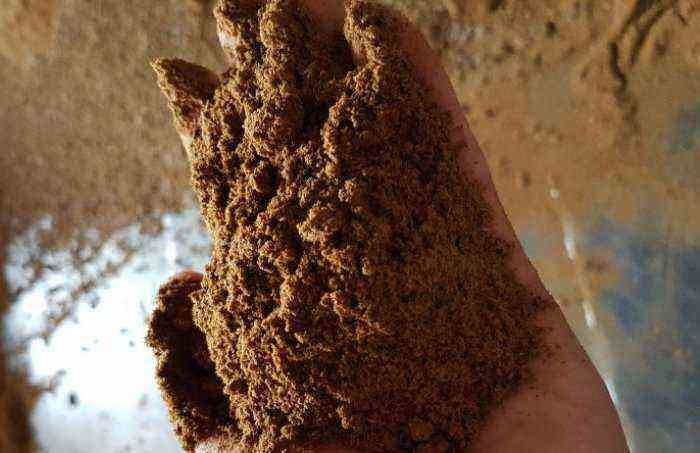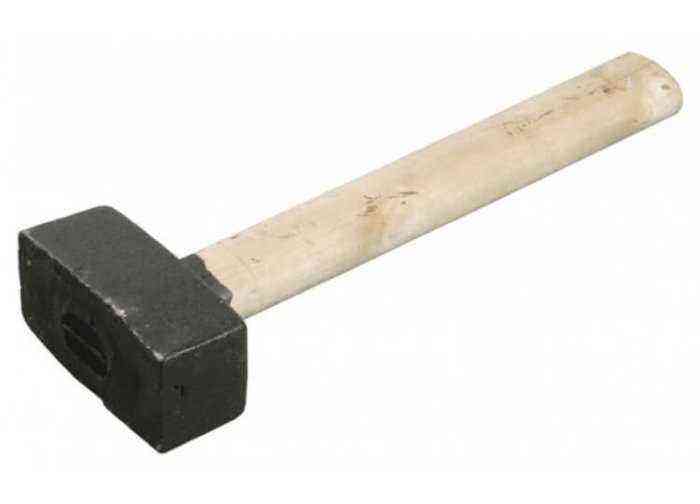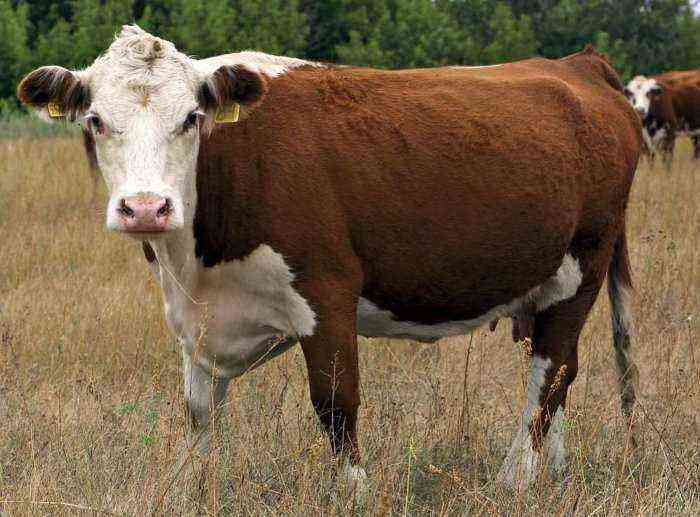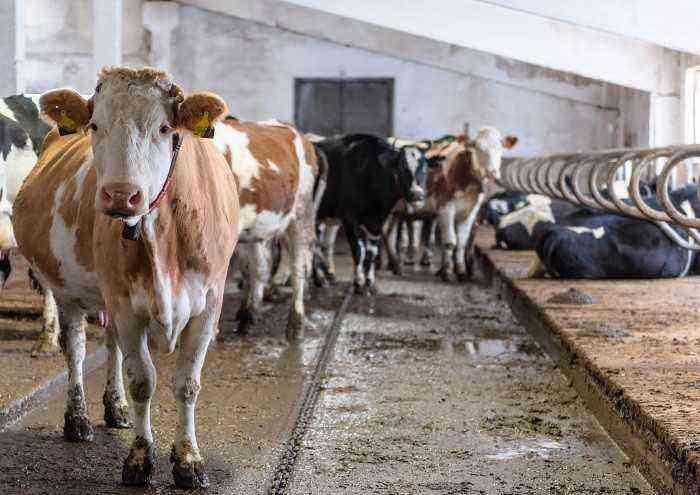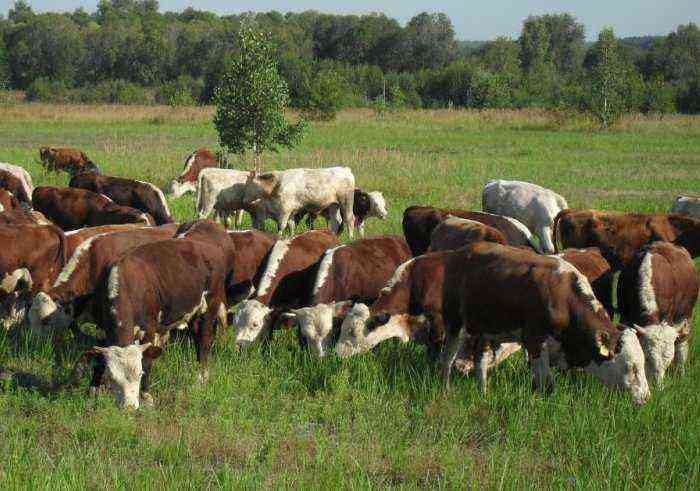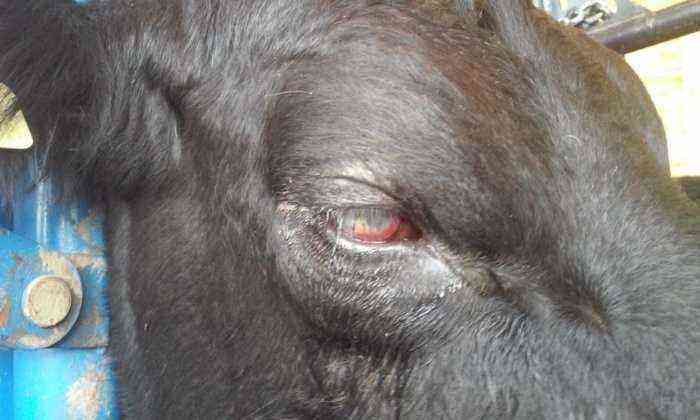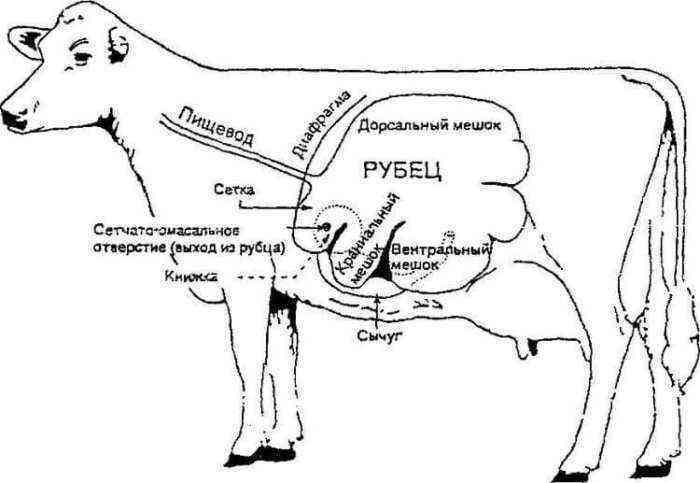Despite the fact that cow’s milk is formed to feed offspring, people have learned to use it for their own purposes, and today this nutritious product has already become an integral part of the diet. But before you start a cow to provide a family with dairy products, you must first find out when a cow gives milk and how to increase its productivity.
First milking of a cow
When does a cow start giving milk for the first time?
Nature arranged the body of a cow in such a way that it produces milk exclusively for feeding offspring. That is, the first time a cow has milk after the first calving. Cattle, depending on the breed, reach sexual maturity at the age of 1 year and 1-6 months. The period of pregnancy in a cow lasts for 9 months. Accordingly, closer to the birth of the baby, milk begins to form in the udder, and after childbirth, you can start milking the cow.
But the process of milking during this period involves a number of important points that must be observed. First of all, in the very first hour after calving, the born calf should be allowed to go to the mother so that she licks it, and then to the udder. This step will solve several problems at once:
- the cow’s udder is first milked by the calf, which is less painful for the cow than the first manual milking;
- the baby receives a number of important nutrients that are contained in colostrum;
- a cow with a calf behaves more calmly during milking;
- the animal passes stress faster after childbirth;
- the calf learns to suck the udder from the first days of life.
The first milk a cow gives is called colostrum. It is formed in the udder within 3-4 days. Outwardly, such a product differs from milk – it has a yellowish tint and a denser consistency. In colostrum there is an increased concentration of nutrients and vitamins that are necessary to maintain the body of the baby in the first days of life.
It is also worth noting that in the first week the cow should be milked only by hand. Machine milking can be too painful for the animal’s sensitive udder, and the cow will react aggressively to the procedure. The calf is allowed to see its mother a couple of times a day during the first week. Then she gets used to regular milking, and the baby can be removed from her.
Manual milking of a cow
How to increase productivity?
Before deliberate attempts to increase the milk yield of a cow, you should make sure that the breed is of a dairy type. With all the desire, it will not be possible to significantly increase the productivity of the meat variety, since it is not bred for these purposes.
The definition of a dairy cow is based on two main characteristics. First, two adjacent ribs in an animal should be at a distance of 4 fingers relative to each other. This is a clear sign of dairy cattle. Secondly, the tassel on the tail of such a cow should be located below the knees. A long tail is also a sign of good milk production.
But whatever the breed, after the first calving, the average cow gives no more than 10 liters of milk. Her productivity itself grows with each subsequent pregnancy. Cows reach their peak, as a rule, by 5-6 calving, after which the volume of milk produced again gradually decreases.
It is worth noting that, subject to a number of conditions for keeping animals, their level of productivity can still be increased. For this you need:
- Maintain the optimum temperature in the barn. If the temperature inside is almost the same as outside, the cow spends most of the nutrients and energy on heat production. Accordingly, the amount of milk produced is sharply reduced. An excellent solution would be to insulate the barn.
- Milking must be carried out at a strictly defined time. The body of a cow quickly gets used to the routine. According to the results of numerous studies, this approach allows you to collect 10% more milk.
- Implement milking three times a day. According to official data, in comparison with two-time milking, this allows you to increase annual productivity by 20%.
- Carry out regular walks of livestock in the fresh air. In this way, animals work up a greater appetite, consume more nutrients and give higher milk yields.
- In time to “run” the cow. This is done no later than 1-2 months before the calving of the animal.
Cow in the pasture
Also, one of the key conditions for high productivity of cows is a properly balanced diet. Feeding must be done at the same time. In this case, the diet is made taking into account the physiological state, weight and age of the animal. The optimal menu for high-quality milk production includes:
- hay, straw (in winter) or green grass (in summer);
- barley;
- wheat bran;
- vitamin and mineral complexes.
To increase the volume of milk yield and fat content of milk, the diet should be supplemented with beets, carrots, and zucchini. They can also significantly improve the taste of milk, making it sweeter. Boiled potatoes and slices of white bread will also be a good help in drawing up a feeding plan. The total daily amount of feed for a dairy cow must be at least 20 kg. Moreover, for highly productive individuals, it is necessary to provide additional rations.
Volume of milk from one cow
The annual and daily productivity of cattle is a rather broad concept that is not fixed in unambiguous exact numbers. On average, ordinary universal breeds are capable of producing 2,5-4 thousand liters of milk per year. The annual productivity of individual dairy cattle varieties can exceed the mark of 9 thousand liters.
In general, the following factors also influence specific volumes of milk from one cow, in addition to breed:
- The weight. The larger the mass of the animal, the more milk it gives.
- Age. After the first calving, every year the productivity of cows increases up to 5-7 births (this period falls approximately on the 7-8th year of the animal’s life). After that, the indicators gradually decrease.
- Animal health and physiology. Almost all cattle diseases negatively affect milk production.
- Proper milking technique. In case of non-compliance with the correct approach to the selection of milk, daily milk yields can be significantly reduced.
- Nutritional balance.
If we talk about the daily volume of milk yield, then this value varies between 8-30 liters. The average is 15-20 liters.
The average daily milk yield is 15-20 liters
Measures for good milk supply
The maximum complete yield of milk from the udder is desirable not only for reasons of economic benefit. If the nutrient stagnates in the mammary gland, this can seriously affect the health of the cow, causing mastitis or a number of other udder diseases.
In the first week after calving, the main condition for high-quality milk flow is the regular admission of the calf to the mother. During milking, the cow may instinctively leave some of the milk for the baby. And the constant feeding of the calf with the udder will accustom the cow to a more complete return of milk.
Also, the following moments can prevent maximum milk yield:
- strong noise near the room in which milking is carried out;
- pushing, shouting and careless handling of the animal;
- frequent change of milkmaids who work with the cow;
- milking irregularity.
It should be noted that even the use of milking machines can cause a decrease in milk yield. This is especially true for cows whose udders are too sensitive.
But in the case of manual milking, one should also adhere to a clear technology for the implementation of the procedure. This will enhance the formation and excretion of milk without harm to the animal. This procedure is carried out as follows:
- The udder is massaged for 60-90 seconds.
- Milk is given out, preferably after preliminary milking of a couple of streams (so as not to cause an infection).
- The final massage and milking of the cow is carried out.
Important! In the first days after calving, the cow must be milked at least 4-5 times a day. It is necessary to reduce the frequency of the procedure up to 3 times in the course of reducing milk production.
When can you drink milk after a cow calves?
After giving birth, milk from cows acquires a “familiar” taste and texture after 5-7 days (depending on the breed). It is from this time that the secretion of colostrum stops. But quite often, colostrum itself is also used, which is pre-boiled, baked or diluted with a small amount of boiled water.
Milk after the kidnapped
You can check that regular milk is being released from the udder by heating it over a gas burner. If the milk has curdled, it is colostrum; if not, it is a regular dairy product.
Knowing when a cow gives milk and what influences the quantity will help the breeder get the maximum milk yield from livestock. Moreover, such knowledge will be useful both at large cattle breeding enterprises and at small household farmsteads.
